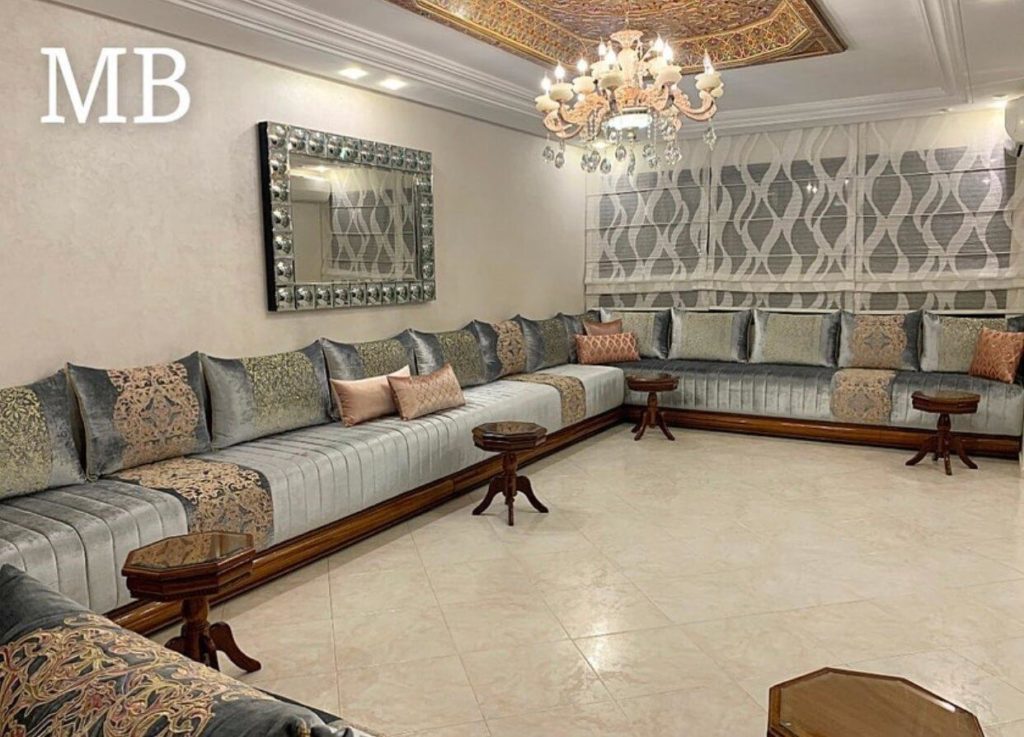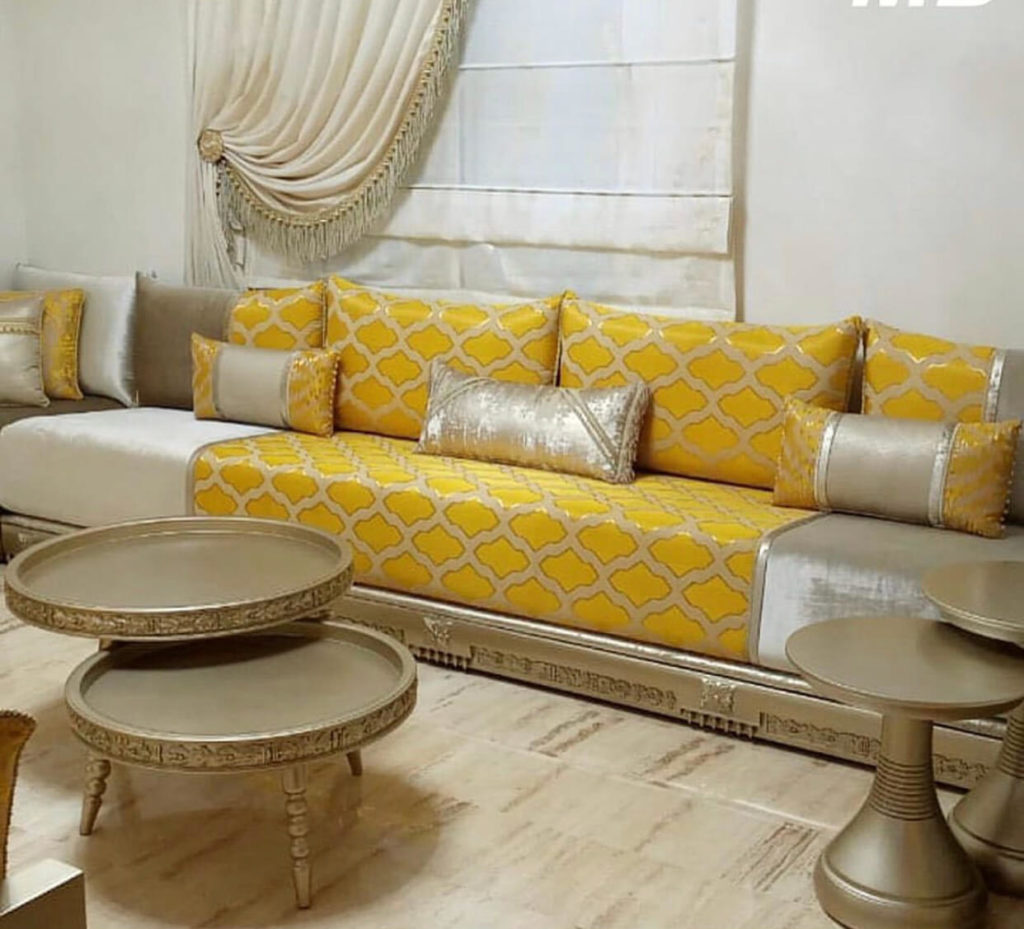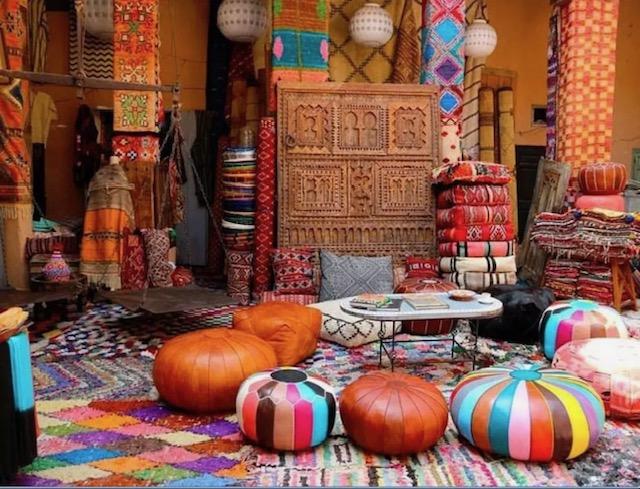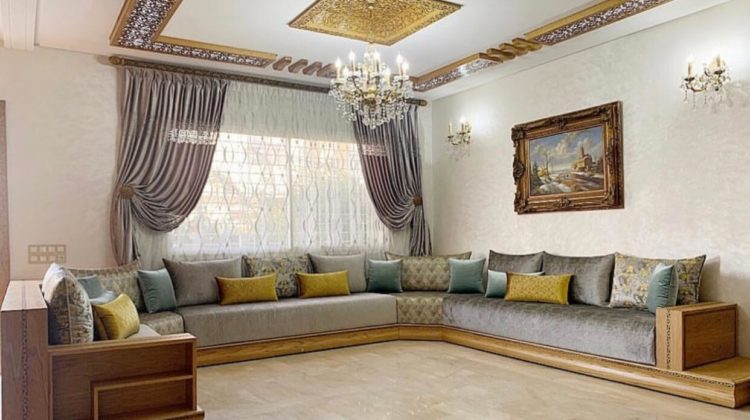
Whether you’re looking to add some Moroccan touches to your own home or whether you’re curious about traditional Moroccan styles and furnishings, this interesting guide to Moroccan furniture will tell you everything that you want to know.
Moroccan interiors typically use various decorative details, such as exquisite tilework, glorious arches, and plasterwork, and feature lavish tapestries. Furnishings often complement existing details within rooms.
While many people associate the insides of an opulent riad with Moroccan life, everyday Moroccan homes can be fairly different from accommodations geared at tourists.
Additionally, there are often differences between Moroccan Arab homes and Moroccan Berber homes.
Table of Contents
Background of Furniture in Morocco
The Moors and Berbers have both played key roles in the development of Moroccan styles, designs, and home furnishings.
European influences may also be noticeable, largely stemming from the days of colonization and trade.
Mediterranean, Spanish, French, and Portuguese elements are the most common.
Typical Moroccan furniture is usually informal. Pieces may be fairly simple in their design, with a reliance on room décor, accessories, and textiles to provide aesthetic pleasure.
Items may also be ornate in their own right, with striking patterns and bold colours, often achieved by carving and inlays.
Patterns often reflect Islamic designs.
With nomadic roots, it was common for Berber homes to place more emphasis on items that were easy to transport, such as rugs, drapes, and cushions, over bulkier and heavier items.
This can still be seen in many Berber homes today. Economically, such items are also often much cheaper too.
Cultural Significance of Moroccan Furniture
Furnishings can be part of visual representations of culture and help people feel more connected to their roots.
Moroccans who live overseas may furnish their homes in a typical Moroccan style to reflect their heritage and retain links with their homeland as well as to feel comfortable and at ease with familiar surroundings.
Furniture may also be a show of wealth and social status. Some people deliberately use high-quality furnishings for areas of the house where they will receive visitors.
Common Items of Furniture in Moroccan Homes
Moroccan Sofas
Moroccan seating is often low and casual. The typical Moroccan sofas are more like low wooden benches with soft cushioning on top.
The cushioning is usually colorful and patterned and plump cushions, along with rich throws, are often scattered on the seats for added comfort and beauty.
Such seats may also functions as day beds and some families may use them as sleeping areas too. This type of traditional Moroccan seating is also known as a sedari.
The seating commonly found in Morocco isn’t unique to the Kingdom; it’s also common in countries across the Arabian Gulf and the Maghreb. It developed as an alternative to people sitting on the floor on rugs, mats, or cushions.
In Berber homes, floor-style seating may still be the norm, with beautiful woven rugs and embellished cushions serving as the primary seating area.
Low Tables
Many Moroccan salons are designed with relaxation and hospitality at the fore. People entertain guests in comfortable and attractive living areas, and offering mint tea to visitors is a huge part of Moroccan hospitality.
It is, therefore, essential that living spaces have tables where the tea set can be arranged and people can set their glasses down.
Dinner is often served at the central table too, with no need for a separate dining table and chairs.
A large, low table (also known as a mida) is often at the centre of a salon, with long sofas arranged around three sides.
There are commonly smaller side tables at the ends of the sofas too. Tables are typically made from wood and may be simple or highly elaborate.
Decorative tables generally feature beautiful carvings, particularly on the legs, and the top may feature exquisite tile inlays in dazzling colours. There may also be bone inlay.
Room Dividers
Room dividers are often found in Moroccan homes, providing a clear visual separation between different areas of a room and adding privacy to more intimate areas, like relaxing lounge spaces or next to the bed.
They may also be used as window screens. Typically, room dividers are made from wood and usually feature highly detailed and decorative carvings. Patterns are often geometric or symmetrical, reflecting traditional Islamic designs.
Ottomans
Sometimes known as a hassock, an ottoman is usually a functional piece of furnishing that can be used as a footrest, side table, or small seat.
Sometimes they open up to provide interior storage space too. The upholstered cushion-like part of the ottoman typically has bold colors and patterns.
Moroccan Poufs
Similar to ottomans, poufs may be used as a footrest or a low seat, almost like a beanbag. Poufs are often made from dyed leather from sheep, goats, or camels and they come in a wide range of colors.
The main difference between an ottoman and a pouf is that an ottoman has short legs, whereas a pouf rests directly on the floor.
Moroccan Rugs and Carpets
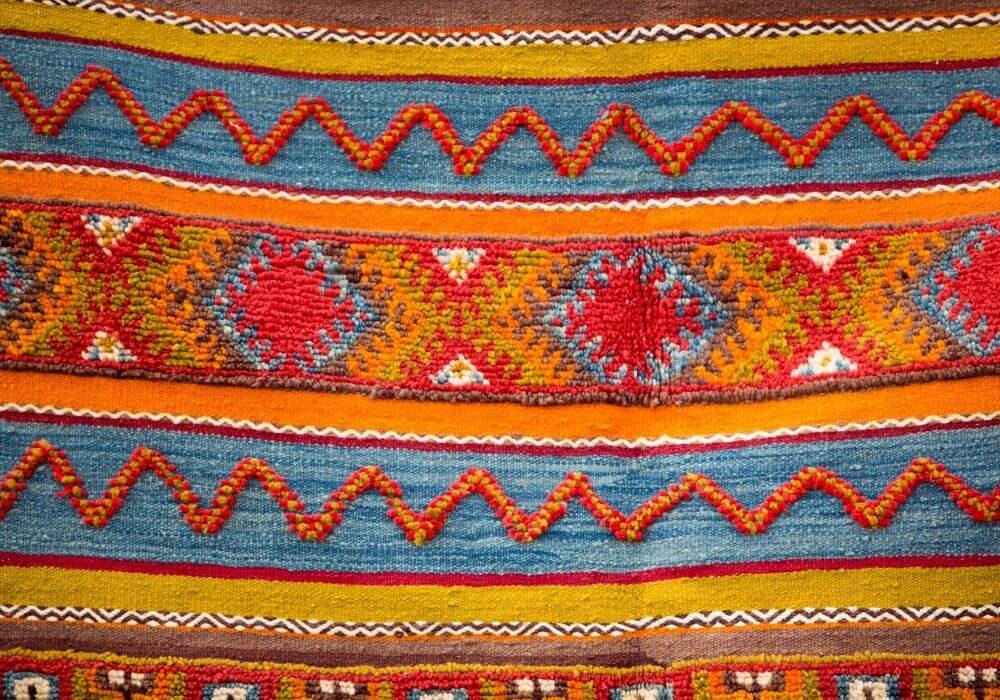
Floor coverings are often a huge feature in Moroccan homes, and it’s polite to remove your shoes before stepping onto a beautiful rug or carpet. Rather than floor-to-floor carpeting, Moroccan homes generally have large rugs laid out in certain areas of the house.
A salon, or living area, almost always has a colorful and lavish rug, sometimes with tassels, beads, and other adornments and embellishments. Rugs are also common in bedrooms.
Lanterns
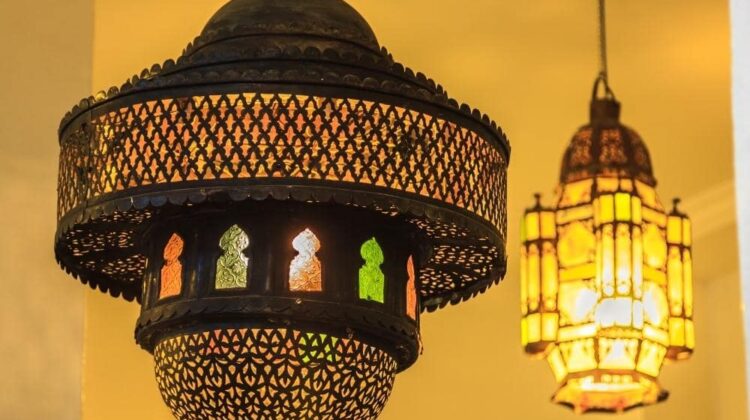
Often found in the souks around Morocco, traditional lanterns are commonly a major eye-catching feature in a Moroccan room. Whether a lantern hangs from the ceiling, stands on a table, or is free-standing on the floor, it usually makes a statement.
Metal lanterns are the norm, with decorative details worked into the metal by skilled artisans. Light shines through the cut-away parts and casts patterned shadows on walls.
Some lanterns may also use brightly colored glass to project colors as well as shadow shapes.
Mirrors
Mirrors are a frequent item in Moroccan homes, and they may be found in various rooms.
Mirrors are used for both decorative and practical purposes. The frames are invariably decorative, whether it’s carved wood, detailed metalwork, colorful glass, mosaic-like tiles, or encrusted with pieces of glass, beads, and similar.
Moroccan Accessories
While not key pieces of furniture, many Moroccan homes have ornate accessories to add beauty to rooms. Popular ornamental accessories may include mirrors, lamps, pottery, wall hangings, cooper pots, brass plates, and more.
Functional items, such as crockery, tea sets, and glassware, are typically patterned an ornate too.
A major concept with Moroccan furniture and home décor is the evocative collision of different colors and patterns that, while usually clashing, complement each other somewhat like a visual organized chaos.
Bold and striking, Moroccan rooms are usually designed to be comfortable, feel welcoming, and create a statement.
